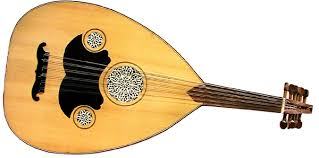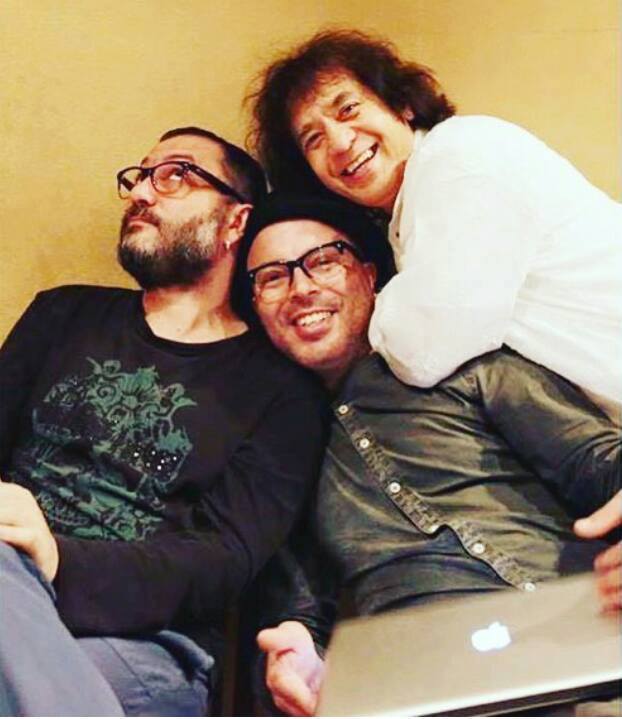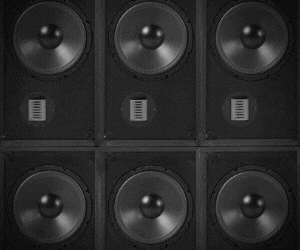While in school and also in some years of my college life, I used to play cricket on my building’s terrace. Buildings then were typically two to three floors in height and hence it was possible to play on terraces (much to the annoyance of the dwellers immediately below the terrace!). I recall Panvel as a place with almost no residential towers and with very less number of people possessing motorbikes and cars, a relatively peaceful place to live as well! So peaceful was the place that one could clearly hear the voice of a flying airplane even while on the terrace of a three-floor building!
There is a Mosque at a 20 minute distance from our building and it would come up with their daily ‘Azaan‘ at around 6:30 pm every day. I don’t know if they do it now. But because of the general silence around, one could clearly hear the Azaan ‘note by note’. While I was at the forefront of comically imitating the ‘Azaan‘, I had secretly started to like it as well! That was the time when I had started to appreciate Music and anything that would make me feel peaceful from within was always welcome. On one such day, I was all alone on the terrace and while listening to the ‘Azaan‘, I had exclaimed to myself, “This so resembles Arabic Music.” I had no clue what Arabic Music was. But that day I had followed every note of the Azaan and I must admit, it was a very beautiful experience!
Last year when I was traveling to CST, our train halted at the Dockyard Road Station for a longer time than usual and the ‘Azaan’ from a nearby mosque caught my ears. I was more familiar to the Music around me now and hence my ears decoded the tune of the Azaan as something close to Raag Darbari/ Raag Suha of Indian Classical Music. I knew that ‘Suha‘ is an Arabic word and in Arabic astronomy this name is given to the Star ‘Alcor’ in the constellation ‘Ursa Major‘ and it also means the ‘Lone Star.’ I began to think that if ‘Raagas‘ originated from Folk Music (as interpreted by Pt. Kumar Gandharva), do the Indian Ragas like ‘Suha‘ and Raagas close to it find their origin to the tunes of Central-Asia? While I do not claim this as THE thing, there were certain incidences that made me wonder seriously about the
direction of this thought! One of the striking resemblances is the name ‘Adana.’ This is the name of a city in Turkey and there is a ‘Raga’ in Indian Classical Music by the same name. Interestingly, it is close to Raag ‘Suha‘ too!
In February this year, I witnessed a very memorable event at the NCPA. Ustad Zakir Hussain played the Tabla, Dhafer Youssef played the Oud and Hüsnü Şenlendirici played the Clarionet. The trio – representing India, Tunisia and Turkey respectively – created some fantastic Music! I was attracted to this concert for two reasons. First of course was Zakirbhai! And the Second and an equally important reason was the Music from the Middle East. I listened to some recordings of these artists a week before the concert and it struck me that the melodies they played starkly resembled the Ragas ‘Bhimpalasi’, ‘Kafi’ and ‘Kirwani’! And it turned out to be the same during the concert. Additionally they
also played melodies that resembled the Ragas ‘Jog’, ‘Charukeshi’, ‘Darbari’ and to an extent ‘Khamaj.’ Maestro Dhafer, apart from playing the Oud, also sang some Desert Chants. His Chants are capable to reach the highest pitch without much of an effort and when they became one with the notes of Maestro Husnu’s Clarionet, all I could experience was Goosebumps on my body and tears from my eyes! Maestro Husnu’s Clarionet had an element of Jazz to it, but it nevertheless was very close to the Indian tunes and it added a special delight to it.

I was lucky to chat with Zakirbhai before the concert, owing to a great Orchestra Conductor at the NCPA who knows me and is very kind to me with his musical support! But the ‘after the concert’ chats with the artists were more enriching. I met Maestro Husnu in an overwhelmed state of mind and told him that the Music he played resembles the Music of India in many phrases. He seemed aware of it. The artist that he admired from India was Ustad Bismillah Khan! No surprises there. His clarinet made us remember Khansaheb’s Shehnai while he was playing! But when I
told him that the name of a Raag in Indian Music is also the name of a city in his country, it was his turn to be surprised! He quickly offered me his email address and asked me to get in touch via email or his Facebook page and I now hope for some constructive conversation with him. Then I met Maestro Dhafer. I confessed that I was overwhelmed and he thanked me by holding my hands in his, a very warm gesture from an artist! Oud is an instrument that is played in the North African countries and also in some countries of the Middle-East. My friend in Algeria tells me that much before Islam came to his country, the nomadic tribes had brought this instrument to the Sahara Desert.

However I could sense certain important aspects from the concert experience. The tunes played in that region resemble those Ragas that belong to the ‘Kafi Thaat‘ family. ( Thaat is a way of classifying Ragas depending largely on their melodic structure). Even the Ragas of the Azaan mentioned at the very top of the narration, find their place in this family. The research on the movement of Musical tunes due to the movement of human civilizations would be indeed enriching! I was fortunate to talk to Zakirbhai about this and he cited the Muslim rulers of India as one
of the reasons. However, a photograph request from a fan prevented any further conversation! But the biggest take away from yesterday was Maestro Dhafer’s Desert chants. When he chanted ‘Bismillah..’ , I was brought back to my childhood and it was then I remembered the tune of the ‘Azaan‘ mentioned above!
For the next ten minutes I experienced a virtual fantasy. A world with no Passports and Visas and people flowing from one country to another without any restrictions. After all we all share an overlap of traditions! No one on this planet follows a homogenous tradition from one particular source. After all no Music in the world has an eight note!
Nusrat says in one of his qawaalis:
‘फलसफ को बहस क अदं र खदु
ा मलता नह,
डोर को सल
ु झा रहा हैऔर सरा मलता नह’
God is not traced in debates of a particular philosophy. I find it difficult to untwist the threads of traditions while searching for God, as I find it difficult to find the ends of these threads.
The Mullas of the Masjid who raise the volume of the Azaan to indicate supremacy try to untwist these entangled traditions. They are reciprocated by the Pandits in the Temple who play Bhajans on the loudspeakers as a ‘response’ to the Azaan! But they will never find the ends of these threads … never! However the purpose of this blog is to display certain observations and further ask questions in order to generate plausible conclusions. So,
- Did certain folk tunes travel to India from Central Asia through Invasions and Migrations?
- Did these tunes influence the creation of Raagas in Medieval India and further prospered Indian Classical Music?
One thing seems sure. If the evolution of Dhrupad Music is from the Vedic, Buddhist or related Chants, the origin of Central Asian Music is from these Desert Chants and the modern day Azaan finds resemblance to it. These tunes came to India in the Middle Ages and were a major force in the creation of Qawwali. This Qawwali then fused with Dhrupad to generate a form which is modern day Khyaal!
Image Credits:
http://duduk.ca/dudukhtml/oud.html
Facebook page of Hüsnü Şenlendirici









